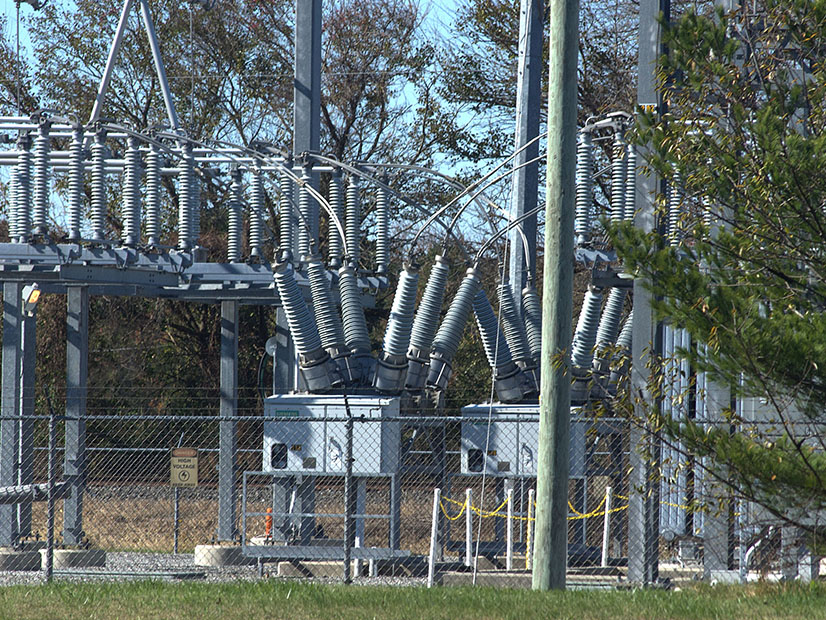
PJM backtracked on posting “indicative” results of the 2024/25 capacity auction Tuesday in the face of stakeholder opposition.
During the Dec. 21 Members Committee meeting Senior Vice President of Market Services Stu Bresler said PJM intended to publish the results on Jan. 3, after filing a tariff change request with FERC to address a “mismatch” in the auction results. That submission was filed with FERC on Dec. 23 (EL23-19, ER23-729).
Bresler said the RTO would file the auction results under the existing rules and PJM’s proposed fix to allow stakeholders to evaluate the impact of the proposal before filing comments on it.
Several stakeholders objected, saying that doing so could take options the commission may consider off the table. (See Capacity Auction ‘Mismatch’ Roils PJM Stakeholders)
“Following consideration of the substantial stakeholder feedback received, PJM will not post indicative results at this time,” a PJM message to stakeholders said. PJM spokesman Jeff Shields said no decision has been made on whether the results will be posted in the future.
Among those options some stakeholders said they hope the commission may consider is permitting auction participants to change their sell offers based on the changes made to the market structure.
Paul Sotkiewicz, president of E-Cubed Policy Associates, said publishing the results could also create unnecessary polarization between groups because of price changes. He urged PJM to refrain from releasing any results until the issue has been settled with the commission.
Independent Market Monitor Joseph Bowring also pushed against releasing the results during the MC meeting, calling them incorrect and irrelevant.
PJM Seeks to Revise Auction Parameters in FERC Filings
Laying out the mismatch that led to the postponing of the auction closing, Bresler said generation included in the calculation reliability requirement for the DPL South locational deliverability area (LDA), which is centered on the Delmarva Peninsula, did not ultimately enter into the auction. Because of a quirk in the functioning of the reliability requirement in small LDAs, the inclusion of that generation elevated the capacity called for by the requirement. When that generation did not offer into the auction, it led to what PJM considers an unjust and unreasonable artificial inflation of clearing prices in that zone.
In its petition to FERC, PJM proposes revising the LDA’s reliability requirement to exclude the generation that did not offer into the auction. The changes would function as an additional factor in the optimization algorithm and be applied prior to the closing of the auction.
“Absent the ability to include this additional factor in the optimization algorithm, PJM would be forced to utilize a materially inaccurate locational deliverability area reliability requirement that does not reflect the actual capacity needs of the particular LDA in question and would result in an unjust and unreasonable outcome” the filing states.
PJM argued to FERC that none of the market fundamentals, such as the amount of supply or load, in the DPL-S LDA had changed since the previous auction and that the increase in clearing prices does not accurately reflect economic realities.
“To be clear, to the extent the LDA is tight on capacity, prices would be expected to separate and be higher than the rest of the RTO. However, in this case, as a result of this confluence of events … the prices become no longer linked to the actual reliability requirements of the LDA and the reliability needs of the LDA are not properly reflected in the auction results,” the filings say.
Should this set of circumstances affect future auctions before a long-term solution is found, PJM’s proposal is to use the same methodology in the filing whenever an LDA’s reliability requirement increases by more than 1% from the prior year due to the inclusion of resources that did not offer into auction.
Without adjustments, PJM said, the algorithm would result in clearing prices approximately four times higher than if those resources were removed from the calculation of the reliability requirement. The requirement increased by 373 MW, or 12%, over the 2023/24 Base Residual Auction (BRA) parameters, while no other LDA deviated by more than 1%.
The figure is calculated for each LDA by combining its internal generation and capacity emergency transfer objective (CETO), which is the amount of imports necessitated by the region’s expected load and anticipated outages. Bresler said the addition of large facilities or intermittent generation into a small LDA — particularly one with a higher winter load that does not align with solar output — can result in the reliability requirement increasing due to the capacity transfers needed for periods when those units are not available.
Even when resources that increase a region’s reliability requirement do not end up offering into the auction, they continue to result in an elevated requirement for imports and so an artificially high clearing price, PJM argues.
“This results in a fundamental mismatch between the actual load requirements and the resource supply stack, which ultimately yields an artificially inflated clearing price that is unjust and unreasonable. More particularly, based on preliminary auction data, PJM estimates that the clearing price for the DPL-S LDA would be more than four times what it otherwise should be if the locational deliverability area reliability requirement is updated to accurately reflect only those resources that actually participated in the BRA,” the RTO’s filings say.


